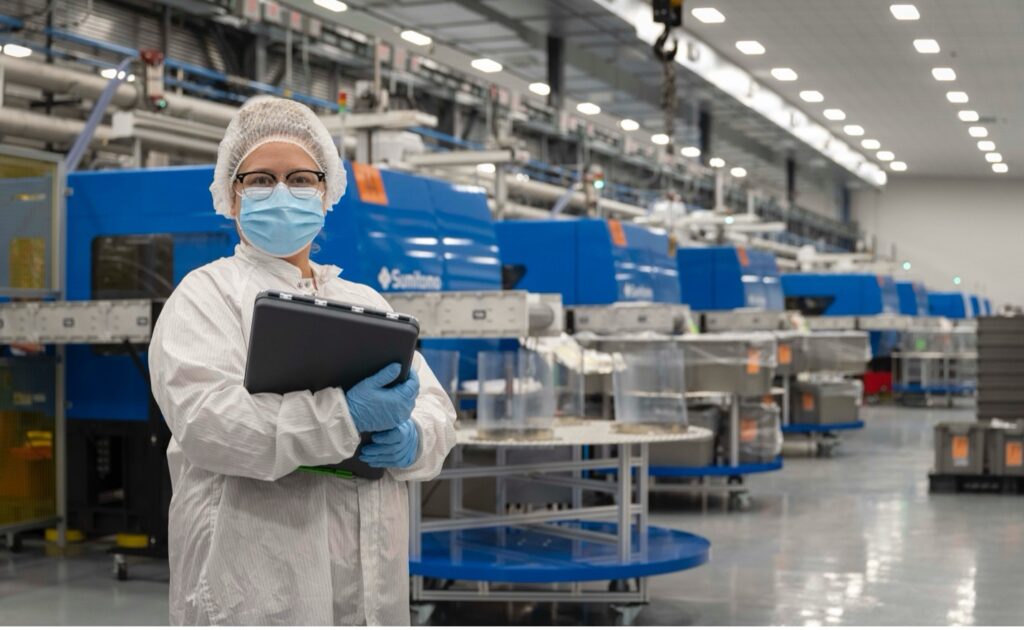Navigating the Complexities of Medical Device Regulations

As medical device technology continues to evolve at an astounding pace, new regulations must emerge alongside it. In just the past few years, digital elements like cybersecurity, AI, ML, and SaMD have entered the regulatory realm with guidelines surrounding their development and implementation. This dynamic regulatory landscape can prove to be a challenge for medical device manufacturers, who must meet stringent requirements yet also remain flexible as requirements change. In this blog, we’ll be going over some of the challenges- and subsequent opportunities- that come with navigating regulations in medical device manufacturing.
Understanding Medical Device Classifications
With such a wide variety of products falling under the umbrella classification of medical devices, it’s important to consider that not all items are made equal. The FDA recognizes this, and has developed a classification system to ensure that devices which pose a greater risk to users are held to the most stringent possible standards. This classification system prevent simple products from being overengineered, and complex products from being under engineered.
The FDA classifies medical devices into three different groups: Class I, Class II, and Class III. Items in the Class I category pose the least risk upon failure or misuse- think of a pair of glasses or a toothbrush- while items in the Class III category pose significant hazards or even fatality if a malfunction were to occur. Life-sustaining items such as pacemakers would fall into this category. Knowing an item’s classification is the first step toward successfully navigating regulatory hurdles in medical device manufacturing, as that sets the standards to which compliance must be met.
Regulatory Framework for Medical Device Manufacturing
Regulatory compliance could not be more critical to ensuring the safety of medical devices. To that end, all medical device manufacturers in the United States must abide by FDA regulations. This includes dedicated medical manufacturers, contract manufacturers, repackagers, relabelers, and more.
The FDA regulates medical device manufacturers on the following criteria:
- Establishment Registration
- Medical Device Listing
- Premarket Notification
- Premarket Approval
- Investigational Device Exemption
- Quality System Regulation
- Labeling
- Medical Device Reporting
Across the board, all medical device manufacturers are required to register their establishment and list their medical devices with their intended classifications to the FDA. Most Class I and some Class II items can be exempt from the Premarket Notification step as defined by the FDA. There are many such rules which are designed to bring simple or proven products to market faster, such as the 501(k) exemption. Doing research on a particular item’s eligibility for these rules and exceptions can provide companies with an excellent way to get their product manufactured and brought to market faster with a lower financial investment.
In addition to FDA regulations, medical device manufacturing facilities are subject to ISO standards to ensure device quality and adherence to best manufacturing practices. All medical devices must be produced in a facility that adheres to ISO 13485 standards. Additional standards that are often relevant include ISO 10993 for biocompatibility, and ISO 14644 for clean room manufacturing. Medical companies can partner with manufacturers that hold these ISO certifications for added peace of mind and the ability to produce items with traceable quality.
At Tessy, we guarantee quality with the latest manufacturing tech and certifications in ISO 13485 for Medical Devices, ISO 14001 for Injection Molding, ISO Class 7 & 8 Clean Rooms, and more.
Challenges in Regulatory Compliance
The road to regulatory compliance is often lengthy, and can get thrown off-track as standards are revised from year to year. It is not uncommon for the FDA approval process to take months, years, or more, even without delays- so be prepared to dedicate whatever resources may be necessary including ample time and steady funding.
As quickly as regulations may change, technology sometimes evolves even faster. Rapid technological advancements can outpace regulatory frameworks, creating uncertainty about how new technologies will be regulated. For instance, devices incorporating artificial intelligence and machine learning present unique challenges, as current regulations will certainly need to be changed and expanded as the technologies develop to fully address their complexities.
The costs associated with implementing and maintaining a robust quality management system (QMS), conducting clinical trials, and preparing regulatory submissions can be substantial. Smaller companies, in particular, may struggle with the financial burden of compliance, but the FDA has taken some initiative toward helping small businesses with reduced fees.
Although FDA compliance is a highly complex matter to navigate, the process is demanding for good reason. These regulations are what ensure the safety of the end user, from household items like contact lens cases to medical implants like stents. Non-compliance should never be considered an option, as the consequences can be expensive, harmful, and in the worst case, fatal. Beyond the immediate impact, non-compliance can hold long-term consequences down the road including loss to market access, increased regulatory scrutiny, and loss of customer trust.
Transforming Regulatory Challenges Into Opportunities
While there are many facets to complying with medical device manufacturing regulations, it is imperative to never overlook a single detail. One way that manufacturers can make compliance easier is by adopting a quality management system like the FDA’s Quality System Regulation (QSR) and ISO standards. Manufacturers who utilize quality management systems can enhance efficiency, reduce costs, and maintain high-quality standards through continuous improvement. Compliance with QSR and ISO 13485 is not just a regulatory requirement but also serves as a global mark of credibility. Regulatory bodies worldwide recognize these standards, facilitating smoother market access and reducing the risk of non-compliance penalties.
To stay ahead of regulatory changes, manufacturers can invest in the development of a regulatory intelligence group or department. This involves staying updated on evolving regulations, standards, and guidance documents. A proactive approach helps anticipate and prepare for regulatory changes, minimizing the risk of non-compliance. Additionally, ongoing training and education for employees is a critical part of ISO certification which can help ensure that everyone in the organization is knowledgeable about current regulatory requirements and best practices. A proactive approach not only ensures compliance with current regulations but also positions manufacturers for long-term success in a rapidly evolving industry.
As regulations in medical device manufacturing continue to take new form, one thing that will stay the same is the importance of staying informed, pioneering new methods of improvement, and leveraging those regulations to build connections and trust. By implementing these strategies, medical device manufacturers can expertly navigate the hurdles of regulatory compliance.
When it comes to navigating regulatory hurdles, Tessy always takes the gold. Contact us today to discuss your regulatory challenges.
